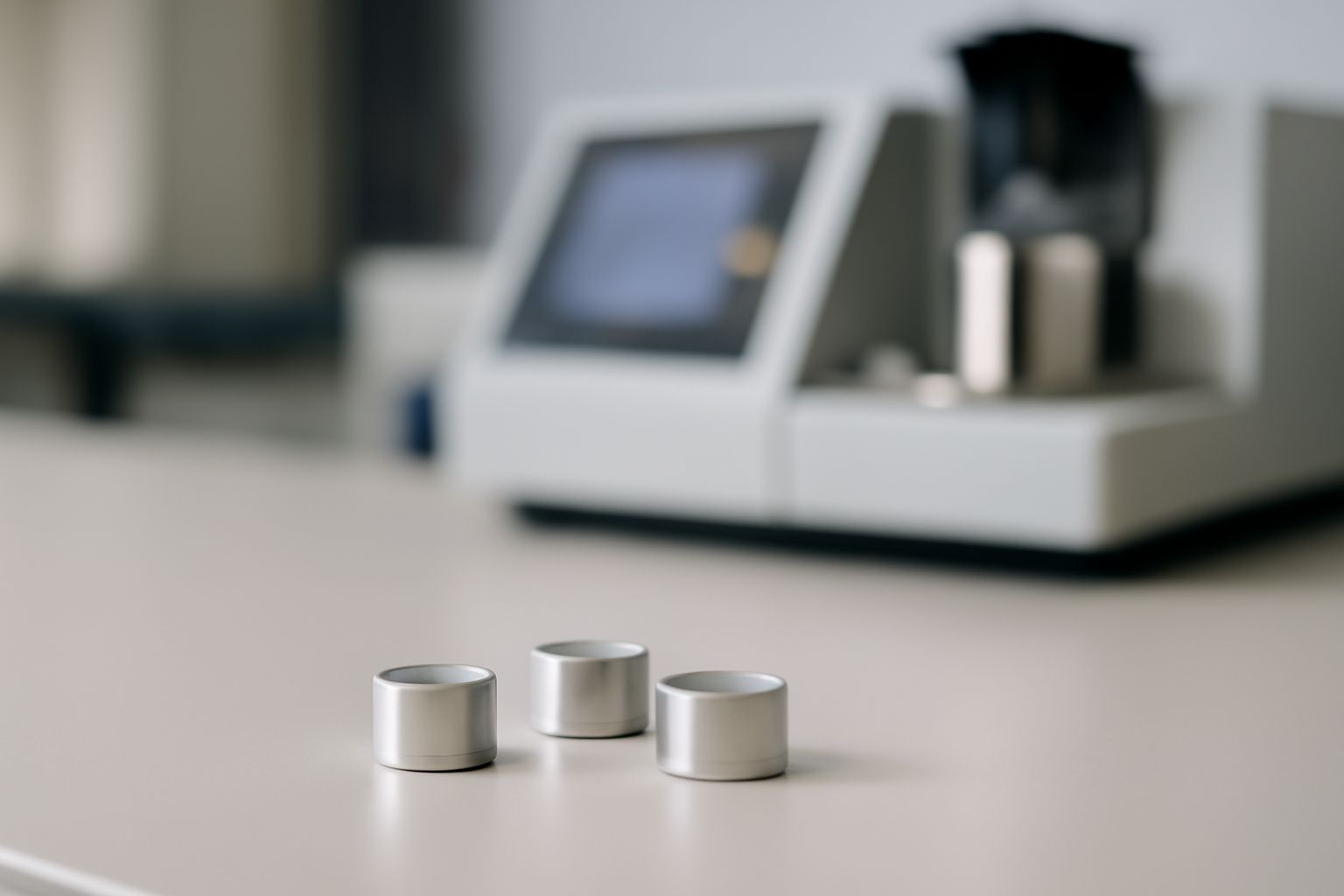Your cart is empty.
shop now
Your cart is empty.
shop now
Researchers want better results, but instrument limits hold them back. Accurate testing begins with the right crucible for each lab sample and method.
Aluminum DSC crucibles support thermal analysis by providing stability, heat conduction, and compatibility. They ensure clean data, bringing more confidence to new material design and research breakthroughs.

Many teams in materials science face repeat runs because of poor data or contamination. After switching to high-purity aluminum crucibles, results become reproducible and routine work gets faster. Reliable crucibles make every step in materials discovery easier, from sample prep to result reporting.
Scientists need a way to test how materials respond to heat. The aluminum crucible is a go-to tool for these tasks in most labs.
Aluminum DSC crucibles are used in Differential Scanning Calorimetry to investigate melting, crystallization, heat capacity, and other thermal transitions in samples like polymers, metals, and composites.
| Material Tested | Typical DSC Measurement | DSC Crucible Role | Reference |
|---|---|---|---|
| Polymers | Glass and melting transitions, thermal stability | Uniform sample heat transfer | polymer characterization |
| Metals | Melting point, solid-solid transition | Reduces contamination, delivers sharp peaks | differential scanning calorimetry |
| Composites | Phase change behavior, interfacial reactions | Maintains environment control | composite material |
I have worked with many polymer blends where only aluminum crucibles delivered stable and clean melting peaks. The same pans are also used for pilot metal alloy projects and composite innovation.
Bad data wastes lab time and can result from heat loss, dirty pans, or poor compatibility. Reliable pans change test accuracy completely.
Using aluminum DSC crucibles reduces baseline noise and ensures even heat flow, directly improving data accuracy and repeatability in critical thermal analysis measurements.
| Accuracy Factor | How Aluminum Crucibles Help | Data Quality Outcome | Reference |
|---|---|---|---|
| Heat Conductivity | Efficient, uniform temperature profile | Sharp, well-defined transition points | calorimetry |
| Purity | Minimal material interference | Reduces baseline drift, boosts accuracy | purity |
| Compatibility | Designed for popular DSC equipment | Fewer test errors from size/fitting issues | laboratory equipment |
For one tough pharma test, I saw how pure aluminum DSC pans delivered steady signals, even with highly reactive organic samples. Consistent data let us move the project forward.
Rapid research advance comes when labs pick proven pans. Many industries now depend on aluminum DSC crucibles for insights and product progress.
Aluminum DSC crucibles support the polymer, electronics, food, and energy industries by enabling precise analysis of material transitions and reactions in routine and R&D environments.
| Industry | Main Use Case | Why Aluminum Crucible | Reference |
|---|---|---|---|
| Polymers | Testing melting, curing, Tg | Stable heat distribution, strong compatibility | glass transition |
| Electronics | Assessing solder and material transitions | Reduces contamination, improves yield | electronics |
| Food Science | Measuring fat crystallization, water content | Safe, easy to clean, repeatable | food science |
| Energy | Phase change studies in storage materials | Reliable for many cycle runs | phase change material |
I support electronics factories using aluminum DSC pans for solder analysis and batteries. Feedback always highlights fewer errors, clear peaks, and less downtime.
Polymer research demands the tightest tolerances. Any contamination or baseline offset can block discovery or new patents.
Aluminum DSC crucibles let polymer researchers study phase transitions, degradation, and curing under pure, tightly controlled conditions. These pans are standard in labs advancing biopolymers, blends, and new processing methods.
| Research Goal | Why Aluminum Crucible Fits | Laboratory Benefit | Reference |
|---|---|---|---|
| Phase Transition ID | Uniform heat ups/downs across sample | Accurate, reproducible thermal events | differential scanning calorimetry |
| Degradation Testing | Low pan contamination | Clear signals, early problem detection | polymer degradation |
| Curing Study | Pans seal easily to prevent mass loss | Confident data for new process scale-up | curing |
In my polymer lab work, every step from method to graph got easier once we moved all baseline and phase checks to certified aluminum crucibles. Data now passes audits and cross-lab reviews.